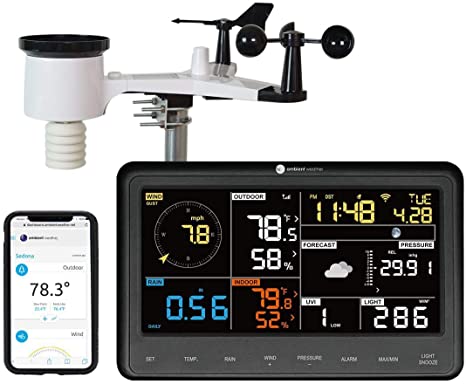Yitzhak Adizes control styles
The final type of the PAEI concept is a leader with a predominance of I. Let’s consider the traits of this leader.
Key question: Who does?
The paeI leader brings people together, provides collective support for ideas, creates an atmosphere and influences the corporate culture of the organization. He works on a system of behavioral and moral norms, ensures teamwork and aims to ensure that each team member can be interchangeable.
The integrator prioritizes invisible management, “resolves” misunderstandings, looks for points of common interest. At the same time, he does not strive to be irreplaceable: in his group, each member can take a leading position and lead the team to the intended goals.

The driving force of integration is the need for unity, involvement. It creates and cares for the culture of mutual respect, cooperation, trust.
Integration can be divided into two types:
– active : the leader unites the team without being part of it;
– passive : the leader is a member of the group.
In turn, integration can have three directions :
– up: uniting people higher in status, position;
– horizontal: creating a close-knit group of similar ones;
– down: uniting people who are subordinate.
For the formation of competent leadership, the integration function is very important: leader I aims to create connections, keep them running smoothly in the present, and think about the future.
Ardent Supporter: Leader I
Among all types, this leader has the most creative abilities and innate communication skills: he has to make decisions on the basis of an unstructured, dispersed knowledge base. This is work with people and human qualities: the integrator’s task is to unite people with different traits, interests, advantages and disadvantages.
The paeI manager has excellent empathy: he has a keen sense of employees, is able to empathize with them … He has a developed function of deductive thinking: he feels the line between what is said and what the person intended to say. He has a lot of his own problems and “cockroaches”, thanks to which he understands others, and in some cases even puts other people’s interests above his own.
The “ardent supporter” does not care what the company is doing, how the team came to a consensus: he is interested in whether we agree . He is the one who takes the lost person by the hand and helps him find the goal. He tries to adapt to any conditions and make everything go smoothly. The leader I is interested in what plan will be acceptable for a large number of influential people: he is not the leader, but the follower, so the integrator leader is not a leader.
Style pros:
– creating rules and adhering to company culture;
– teamwork;
– good communication skills;
– developed empathy;
– flexibility, adaptability to conditions;
– striving for unification, rallying people.
Leader-integrator: go with the flow
To cite a metaphor as an example, an integrator leader is like a fish: before starting to swim, he analyzes the underwater current, chooses the desired direction and merges with it. He is a sensitive politician who listens carefully to what is happening and tries to catch the “pitfalls” of the current.
But such a politician does not think about the future generation: he is concerned about the upcoming elections and his own reputation. By resolving the conflict, he achieves a visible agreement, and, in fact, does not solve the main problem that gave rise to the dispute. In a team, he will reject any proposal that can “heat up” the atmosphere, even if it’s worthwhile.
The integrator leader is difficult to catch, he is a “slippery fish” that is difficult to catch, and also the harder it is to understand her position. He remains in power for a long time not because of his personal qualities, but because he understands who is now “at the top” and quickly takes the right side. This is a movable weather vane of the ship: it senses which side the wind is blowing from and adjusts to it.
At meetings, he turns into a hearing: he is interested in who said what, what was meant report and on whose side the power is now. The “ardent supporter” works with the same people with political flair. The main task of its staff is to keep the manager informed of the latest events, deliver gossip and hot news.

Cons of style:
– concentration on form, not content;
– concern for personal interests;
– creation of imaginary unity;
– indecision in decision-making ;
– lack of firm convictions;
– belittling one’s own interests;
– manipulating the opinion of employees;
– lack of a clear goal.
Leadership Tips I:
▲ Do not judge superficially: strive for in-depth analysis of problems.
▲ Set a goal and direct the team towards it.
▲ Strengthen your own point of view and not manipulate the opinion of others.
▲ Make decisions based on facts, not gossip.
▲ Put the interests of future generations above personal ones.
Be a leader
To summarize, we can say that none of the types P, A, E, I can be a real leader. When only one of the functions manifests itself, pathological extremes arise: “lone hero”, “bureaucrat”, “arsonist” or “ardent supporter”. To ensure quality management, the company must work according to a new paradigm, the basis of which is the joint work of complementary types.
Any organization needs a team: top managers, leaders, employees, complementary qualities of each other , and thereby balancing the imbalance of opinions and attitudes. The company does not need a “star” – a unique one that works brilliantly in one direction. It is necessary to organize production, entrepreneurship, administration and integration into one complementary team , which will be the “skeleton” of the company and resist any changes.
More about the concept of PAEI , complementarities and conflicts between leadership styles, on the creation of the DNA of an organization – on the course of Yitzhak Adizes “ Leadership Roles and Styles ”. Course duration – 4.5 months, start – May 17, 2021.
